ESG Investing: Too Good to be True?
Good versus Bad Corporates
January 2019. Reading Time: 10 Minutes. Author: Nicolas Rabener.
SUMMARY
- ESG factors generated positive excess returns since 2009
- Show positive exposure to Low Volatility & Quality and negative exposure to Value & Size
- Factor exposure is likely structural and not temporary
INTRODUCTION
BlackRock is aggressively launching products with high environmental, social, and governance (ESG) ratings. The firm’s CEO, Larry Fink, recently predicted that assets under management (AUM) in the ESG category will grow from the current $25 billion to $400 billion in 2028.
Investing in good corporates is intuitively appealing. Who doesn’t want to make money while doing good? But do stocks that rank high on ESG metrics actually outperform? After all, sin stocks — think gambling, alcohol, tobacco, and firearms — generate above-average returns, according to research. It would be a bit paradoxical if ESG and more-virtue-challenged factors both outperformed. For insight into these issues, we explored ESG factor performance in the US stock market.
METHODOLOGY
We explored ESG data from a US provider that aggregates ESG scores from multiple sources. Using data dating back to 2009, we divided ESG stocks into four main groups: Citizenship, Environmental, Employees, and Governance. Next, we created beta-neutral long-short portfolios composed of the top and bottom 10% of US stocks as ranked according to these four factors. We only included companies with market capitalizations in excess of $1 billion. The resulting portfolios are rebalanced monthly and include 10 basis points (bps) of cost per transaction.
ESG FACTOR PERFORMANCE IN THE US
Except for the Employees factor, all ESG categories generated positive returns from 2009 to 2018. Based on these results, being a good corporate would seem to pay off.
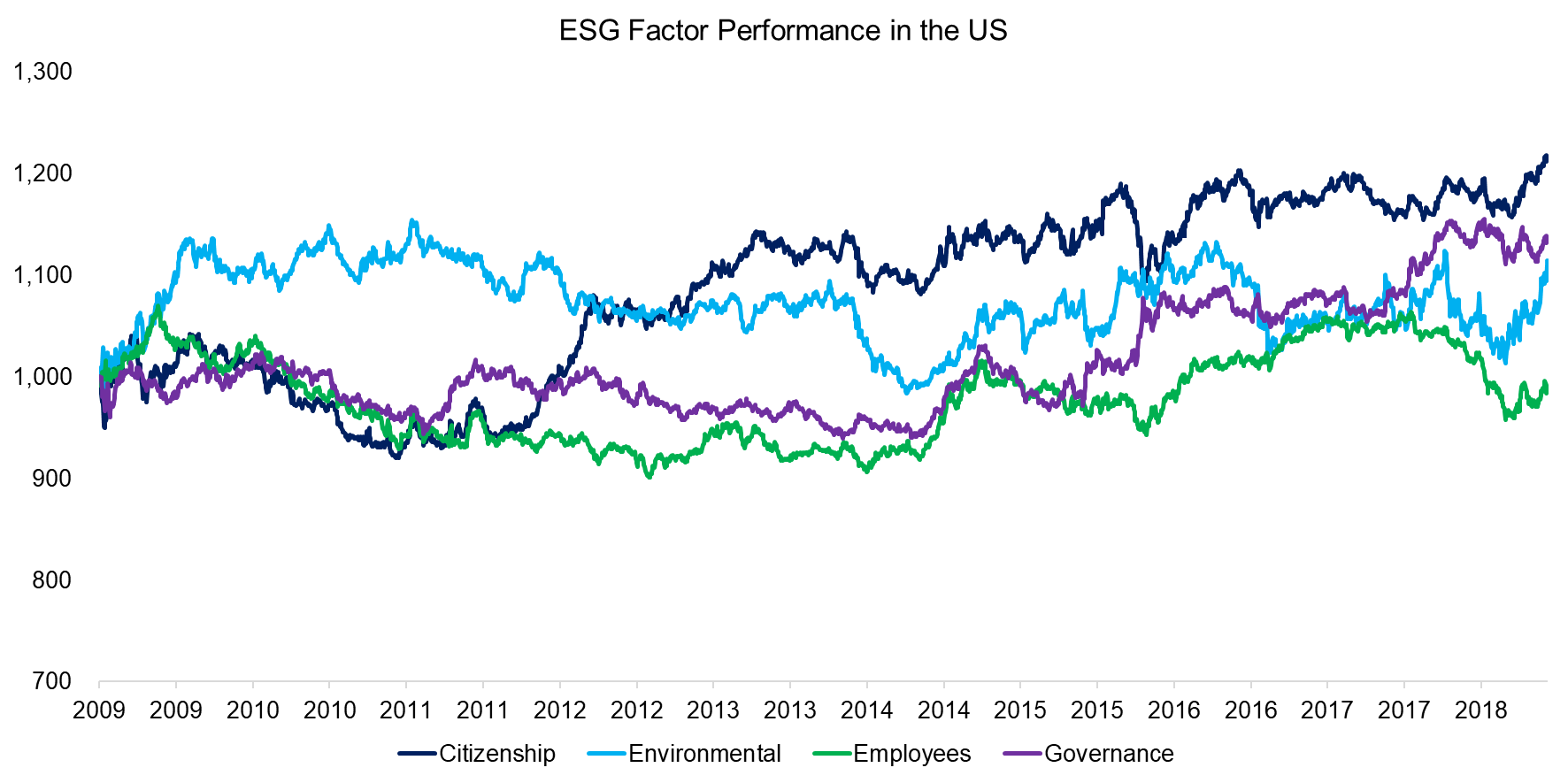
Source: FactorResearch
ARE ESG FACTORS NEW?
But ESG factor performance shares some common trends, so the underlying portfolios likely have overlapping stocks. This is fairly logical. Companies that care about the environment, for example, may show similar regard for corporate governance and their employees.
For more insight into the drivers of ESG factor performance, we conducted a factor exposure analysis. We found that ESG factors are biased towards common equity factors. Of particular note are the negative exposures to both the Value and Size factors as well as positive exposures to the Low Volatility and Quality factors. The R-squared calculations of the regression analysis from which the factor betas are derived average 0.5, implying that the common equity factors explain the performance of the ESG factors reasonably well.
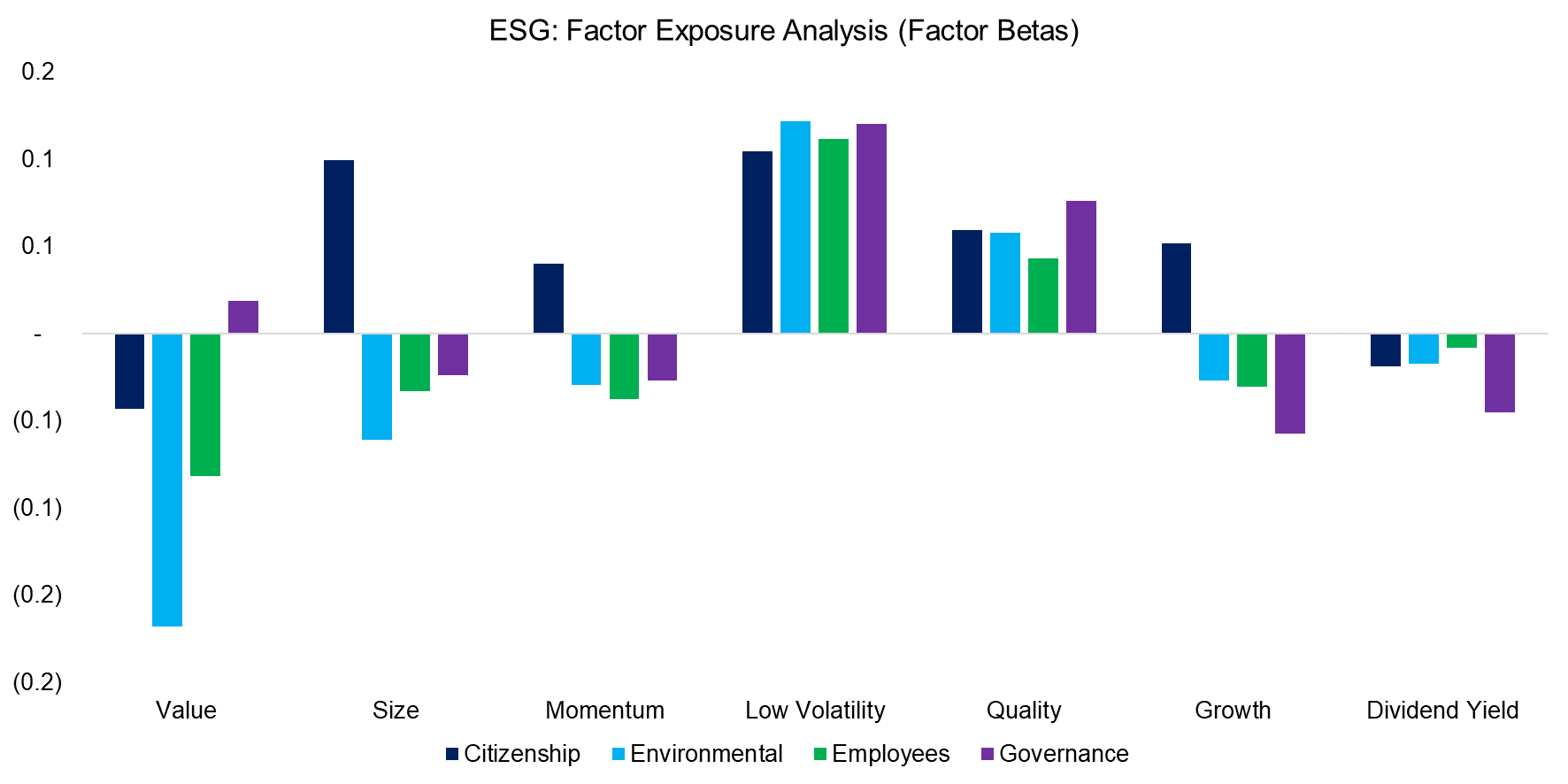
Source: FactorResearch
The negative exposure to the Value factor suggests that stocks with high ESG scores have higher valuations than their less-conscientious counterparts (read There is Value in the Value Factor). One possible explanation for this is that cheap stocks face temporary or structural issues that make achieving high ESG scores less of a priority for the companies.
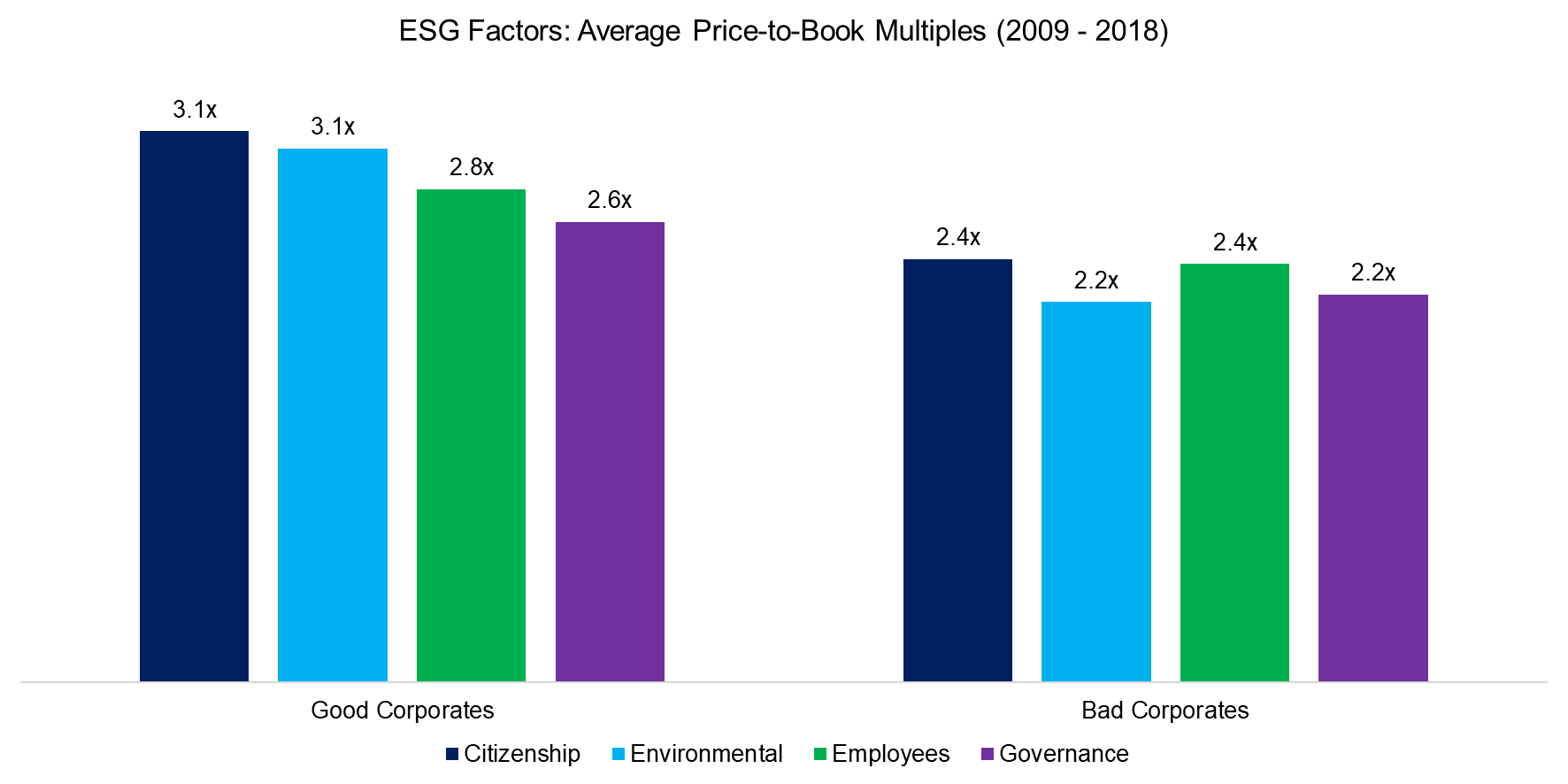
Source: FactorResearch
Smaller companies also have fewer resources. Indeed, the average market capitalization of the top 10% of the highest-ranking ESG stocks is almost twice that of the bottom 10%.
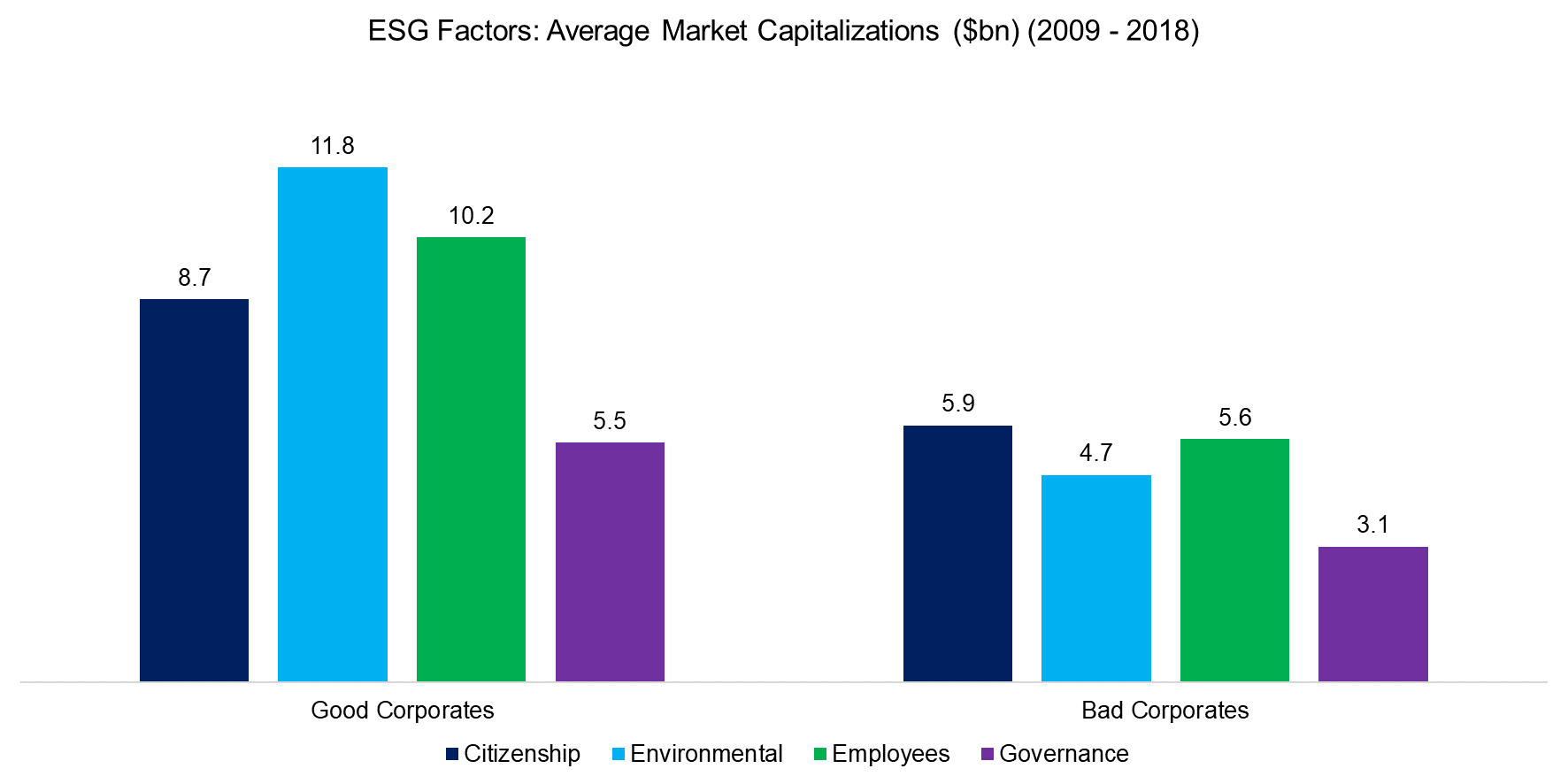
Source: FactorResearch
Stocks with high ESG scores also display strong positive exposure to the Low Volatility factor. So lower-ranked stocks may be more volatile. There doesn’t seem to be an easy explanation for this, though it may reflect biases to certain sectors of the stock market.
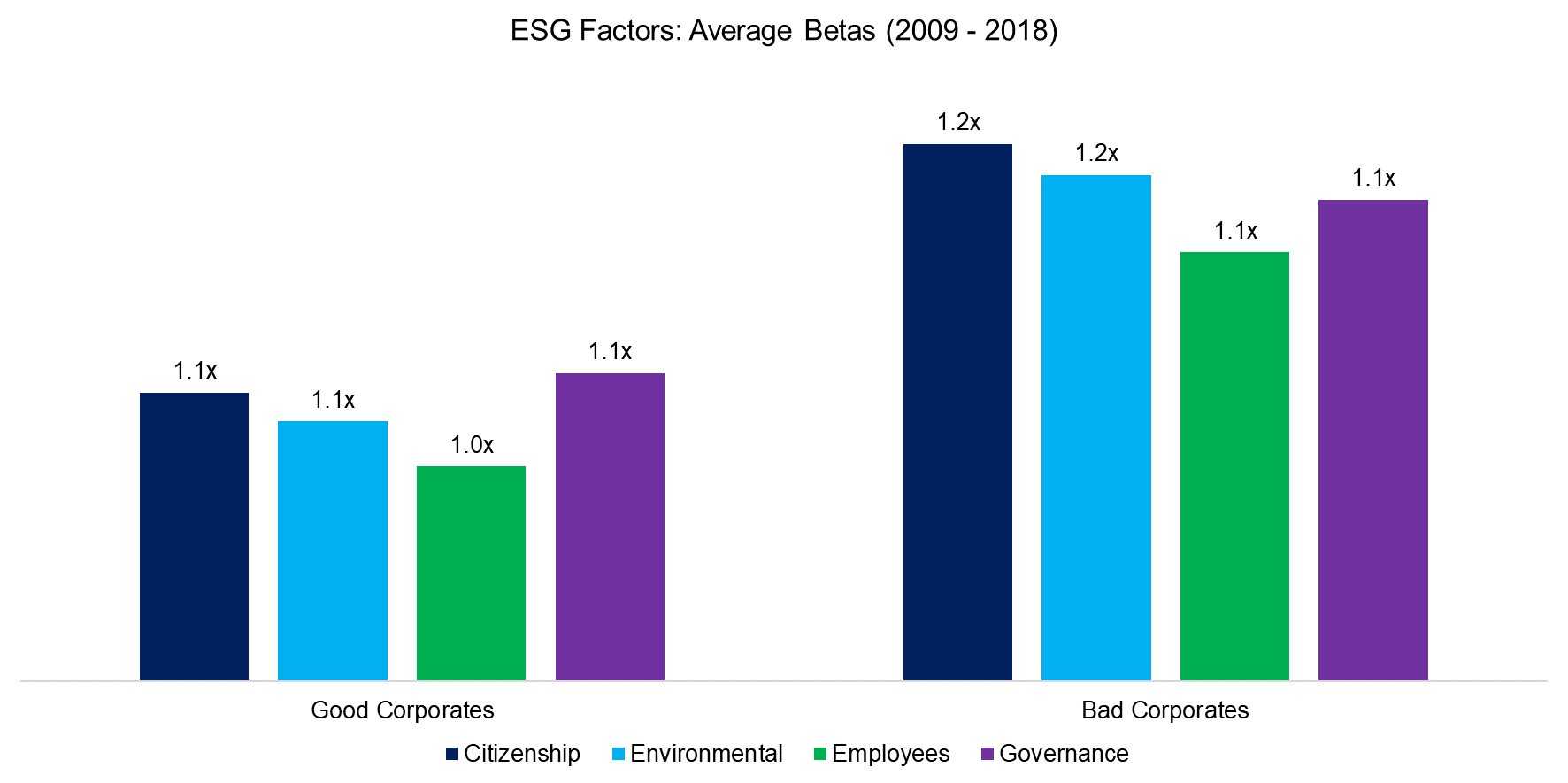
Source: FactorResearch
The positive exposure to the Quality factor, which we define as a combination of debt-over-equity and return-on-equity, has a simpler explanation: Less-levered companies tend to have management with a more long-term perspective, and highly profitable firms have more resources with which to achieve high ESG scores (read Quality Factor: How To Define It?).
WHAT HAS BEEN DRIVING ESG FACTOR PERFORMANCE?
According to the analysis thus far, ESG factors generate positive excess returns. Good corporates pay off, in other words, which would seem to be good news for all investors.
However, this performance may be a product of exposure to common equity factors. The ESG factors exhibited negative exposure to the Value and Size factors, which both generated negative returns since 2009.
More importantly, ESG factors had large positive exposures to the Low Volatility and Quality factors. The Low Volatility factor was the best-performing factor since 2009 and accounts for much of the positive excess returns derived from ESG factors.
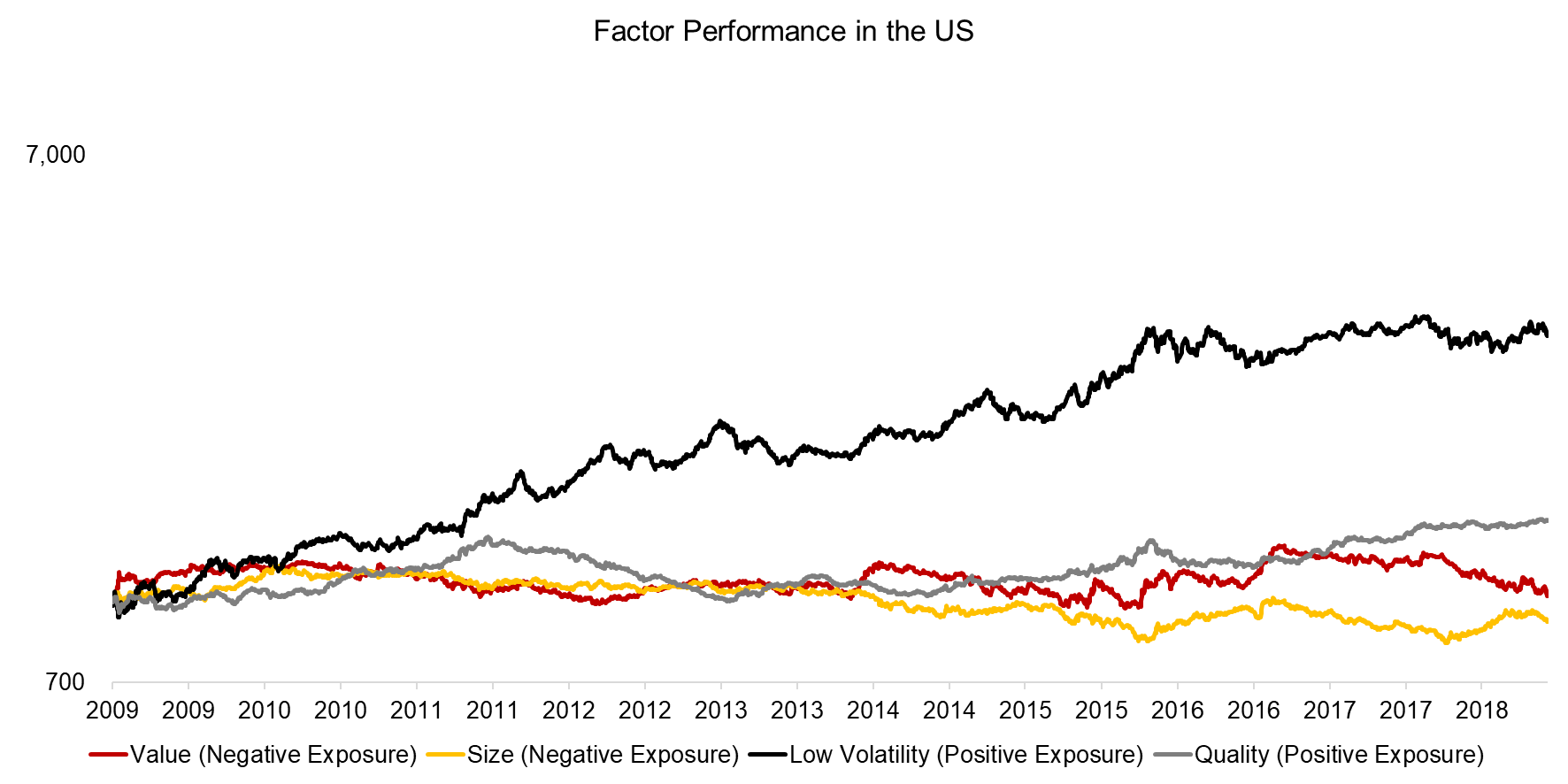
Source: FactorResearch
CHANGING THE PERSPECTIVE
The factor lens is just one way through which to view the ESG factor puzzle. What does a sector analysis of companies that rank high and low on citizenship look like?
It turns out there are large sectoral biases. This is hardly a surprise. Energy stocks tend to have low citizenship scores. After all, oil-fracking companies in the United States are more associated with earthquakes than friendly community engagement.
How does the breakdown by sectors reconcile with the factor exposure analysis?
The negative exposure to the Value factor is reflected in the significant overweight in technology stocks, which trade at higher valuations. Tech companies also tend to have less debt and high profit margins, which explains the positive exposure to the Quality factor. Finally, the positive exposure to the Low Volatility factor can be reconciled with an underweight in sectors like Energy and Materials, which are more volatile than the average stock.
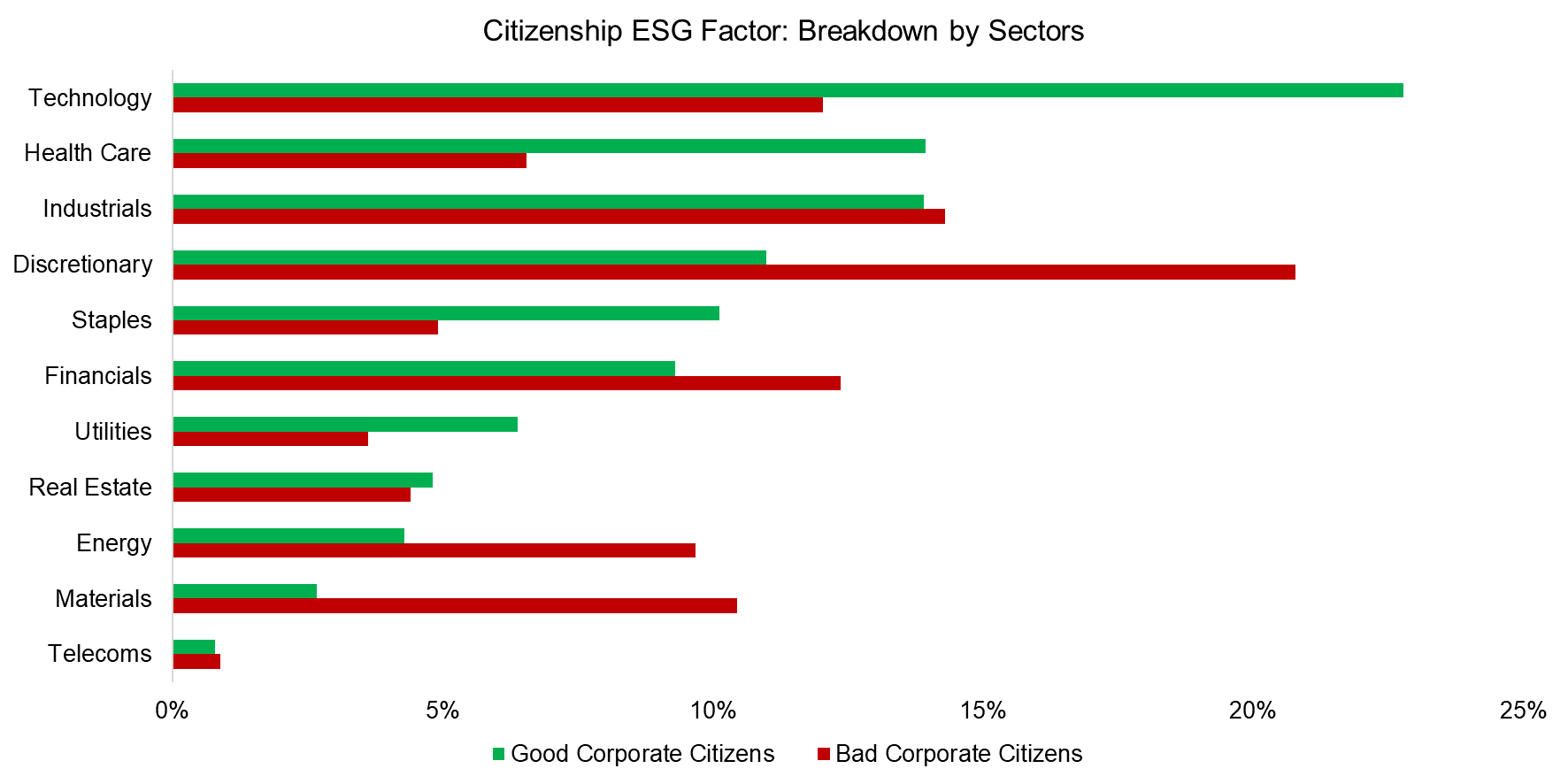
Source: FactorResearch
The notion that companies that care about the environment, look after their employees, and exhibit good governance outperform is likely too good to be true.
The drivers of performance since 2009 were common equity factors. While factor exposure might change over time, ESG investors currently run the risk of missing out if small and cheap stocks start outperforming low-risk and high-quality stocks.
Historically, speculating on small and cheap stocks hasn’t been a bad bet. That may be true again.
ABOUT THE AUTHOR
Nicolas Rabener is the CEO & Founder of Finominal, which empowers professional investors with data, technology, and research insights to improve their investment outcomes. Previously he created Jackdaw Capital, an award-winning quantitative hedge fund. Before that Nicolas worked at GIC and Citigroup in London and New York. Nicolas holds a Master of Finance from HHL Leipzig Graduate School of Management, is a CAIA charter holder, and enjoys endurance sports (Ironman & 100km Ultramarathon).
Connect with me on LinkedIn or X.

